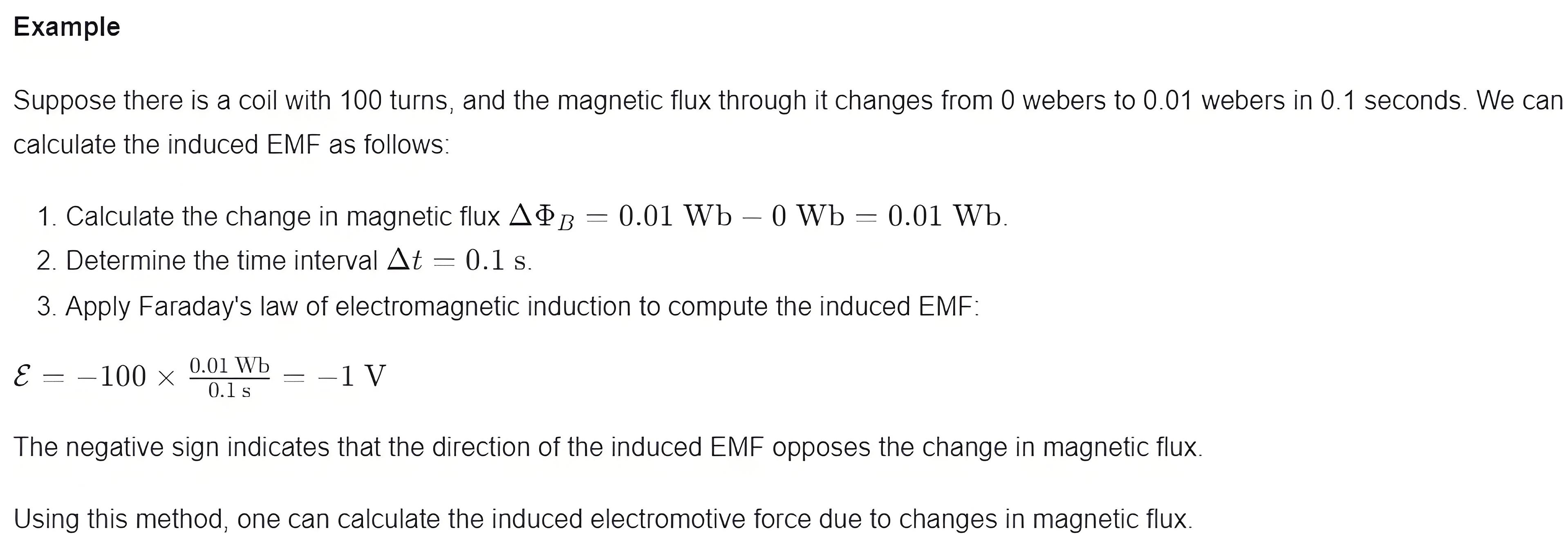What is the method for determining the induced electromotive force in a circuit with varying magnetic flux?
The method for determining the induced electromotive force caused by a change in magnetic flux in a circuit usually follows Faraday's law of electromagnetic induction. Faraday's law of electromagnetic induction describes the induced electromotive force (EMF) due to changes in magnetic flux, as follows:

The meanings of the symbols are as follows:
E stands for induced electromotive force (volts, V).
N is the number of turns of the coil.
ΔΦB is the change in magnetic flux through the coil (unit: Weber, Wb).
Δt is the time (in seconds, s) required for the magnetic flux to change.
Application steps of Faraday's law of electromagnetic induction
Determine the magnetic flux: First you need to determine the magnetic flux through the coil. The magnetic flux ΦB can be calculated by the following formula:

Here B is the magnetic induction intensity (unit: tesla, T), A is the effective area perpendicular to the direction of the magnetic field (unit: square meters, m²), and θ is the Angle between the direction of the magnetic field and the normal direction of the coil plane.
Calculate the change in magnetic flux: If the magnetic flux changes with time, you need to calculate the change in magnetic flux over a period of time ΔΦB= ΦB, final−ΦB,initial
Determine the time interval: Determine the time interval Δt required to change the magnetic flux.
Faraday's Law is applied: Finally, the change in magnetic flux is divided by the time interval and multiplied by the number of turns of the coil N, you get the induced electromotive force.
Direction judgment: According to Lenz's law, the direction of the induced electromotive force always causes the current generated by it to produce a magnetic field, which will hinder the change of the original magnetic field. That is, the direction of the induced electromotive force always tries to counteract the change in magnetic flux that causes it.

The Electricity Encyclopedia is dedicated to accelerating the dissemination and application of electricity knowledge and adding impetus to the development and innovation of the electricity industry.













